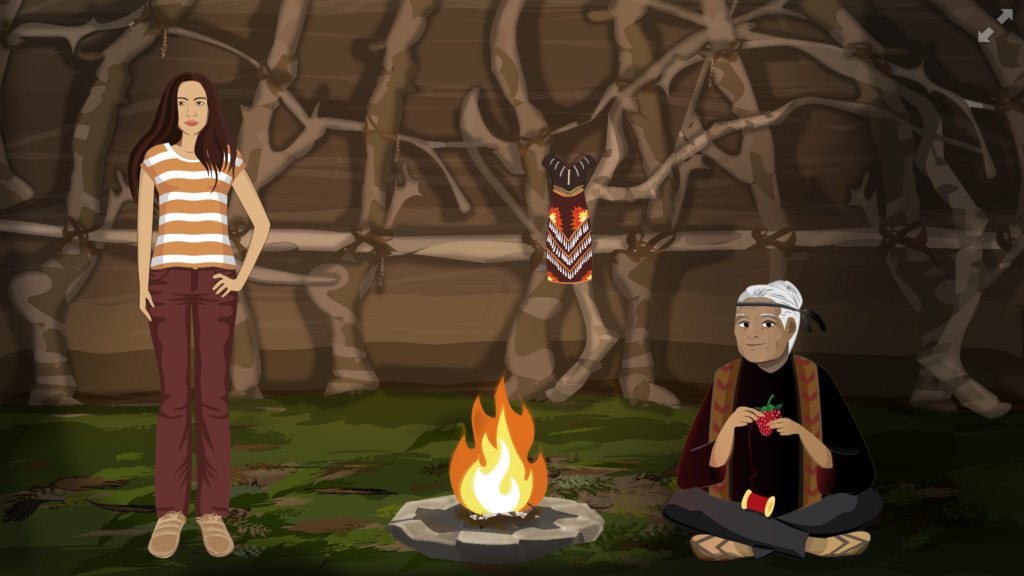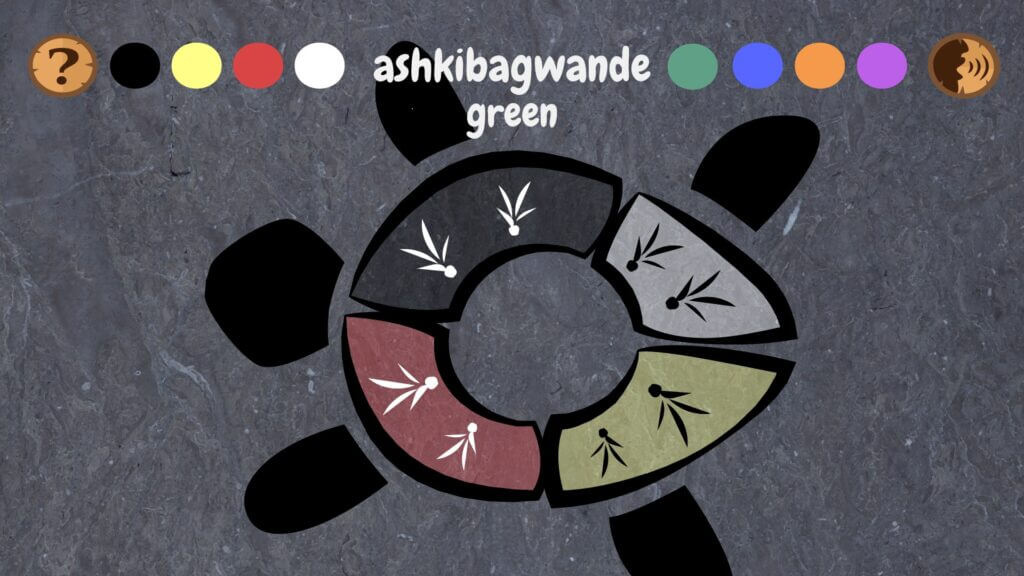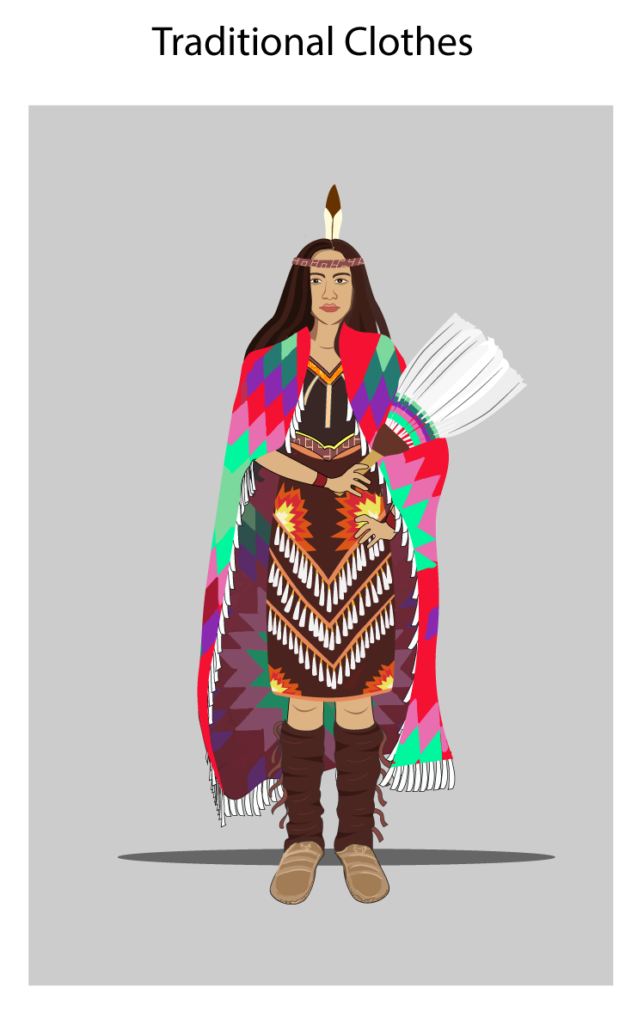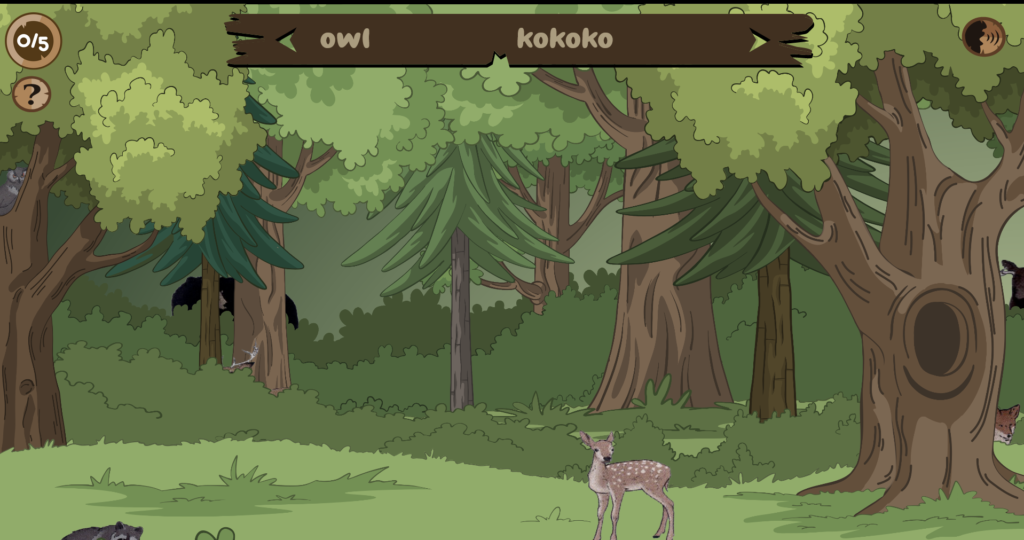Interactive App Aims to Teach Kids about Algonquin Language and Culture
Posted on Wednesday, June 16th, 2021
Elementary school teacher Bertha Chief of the Timiskaming First Nation had often observed her students’ fascination with iPhones and tablets, and started thinking about how she could harness that passion to teach kids about the Algonquin language.
One day, when Bertha and her son Kevin Chief were attending a pow-wow, Kevin introduced Bertha to his long-time friend Michel Lacroix, an Algonquin College professor in Design Studies, thinking Lacroix could help give shape to Bertha’s idea. Soon, Lacroix became the Creative Director of a collaborative project with the Chiefs to develop a mobile app that would teach children aged 3-12 about Algonquin language and culture. The app is called the Noopimok—which means ‘in the bush’— E-Learning Project. 
In the fall of 2017, after getting approval from the department chair, Lacroix started making the app an assignment for students in his classes, which have ranged from UX (User Experience) and UI (User Interface) classes to Graphic Design.
“I use the project as a teaching tool,” explains Lacroix. “I’ve had my students push the project forward in class—I’ve made it an assignment.”
While the project has now become a client-led one in the Interactive Media Design program, meaning that Lacroix and Bertha and Kevin Chief are officially clients of the group of students currently working on the app, Lacroix has been the main driving force behind it for the past four years, and has done an extraordinary amount work to bring it to fruition.
Lacroix’s push—and the years of development by various groups of students—has paid off. The app is visually beautiful, easy to use, and effective.
The current plan for the app includes five games kids can play, four of which have already been developed. There is a drumming game, where kids must solve simple math equations and then hit the drum the correct number of times, at which point the app also says the Algonquin word for the number aloud. There is also an animal game where kids have to match the correct animal to its Algonquin name, and there is a colour game, where kids ‘colour in’ three pieces of art—which are works designed by Lacroix’s friends—by dragging and dropping colours to fill in each section of the artwork, the Algonquin names of which are then said aloud and flashed on screen.
There is also a language-learning segment, and there will be a final game that will teach children about traditional medicines.
Each time a user is successful at completing one of these games, they are returned to the main screen, which features a grandmother in a wigwam sewing traditional Algonquin clothing for either a male or female character (which the player selects at the beginning of the game).

“The main idea was a grandmother—she’s in a wigwam—and she is going to be sewing the clothing. So, the female and male character start out in regular clothing, and then, each game [the kids] complete, they would come to this screen and would earn part of the traditional garments,” says Lacroix.
Lacroix refers to this screen as “the story screen,” saying, “after you finish a game, you will go back to the wigwam screen and she will have sewn you something else, so each game pushes that story forward.”
At the end, the idea is that your character would be dressed entirely in traditional garments.
Lacroix says the app is about 70 per cent done and aims to have it completed by the end of 2021. His hope is that educators will want to use it, and that they can keep building on the current games, making it more complex, and eventually getting it some funding. He also says that while their main audience for the app is Indigenous students, they also hope non-Indigenous students will use it as well.
It’s important to highlight that there’s a wide array of Algonquin languages, and the app does not encompass them all. Lacroix says the app includes language and artwork mainly from Algonquin First Nations in Quebec, specifically the Kitigan Zibi Anishinabeg and Rapid Lake First Nations, which is where most of his family and connections are from.
While he understands this is not ideal, he notes that a lot of the dialects have commonalities and are understandable to other nations.
As for the current group of students working on the project, Team Lead Jesse Morgenroth-Rebin says the project has been an incredible learning experience. “We were trying to implement our game play into a format that matched previous games [designed by previous students],” he explains. “There were definitely design challenges in terms of our designers…there was a very large code base.” All in all, he says, it was great to have a Creative Director like Lacroix “who cares so much” and pushed them to challenge themselves.In April, the students showcased their work on the app at the most recent Virtual Reaction Showcase put on by Algonquin’s Office of Applied Research, Innovation and Entrepreneurship.
The students are all from Lacroix’s Graphic Design class and include, in addition to Morgenroth-Rebin, Christen Subaly, Fengyang Li, Dylan Hearne and Kaitlin Golab.
The fun, interactive nature of the Noopimok E-learning Project has the potential to reshape how Indigenous and non-Indigenous students learn about Indigenous language and culture and could serve as a model for countless other apps. One of the Truth and Reconciliations Commission’s call for actions is for governments across Canada to incorporate more curriculum in public schools about the history, culture, and contemporary contributions of Indigenous peoples, and the Noopimok app is a model for how that could be done in a fun and engaging way.
To learn more about the Noopimok E-Learning Project, click here.
- Posted in
- News